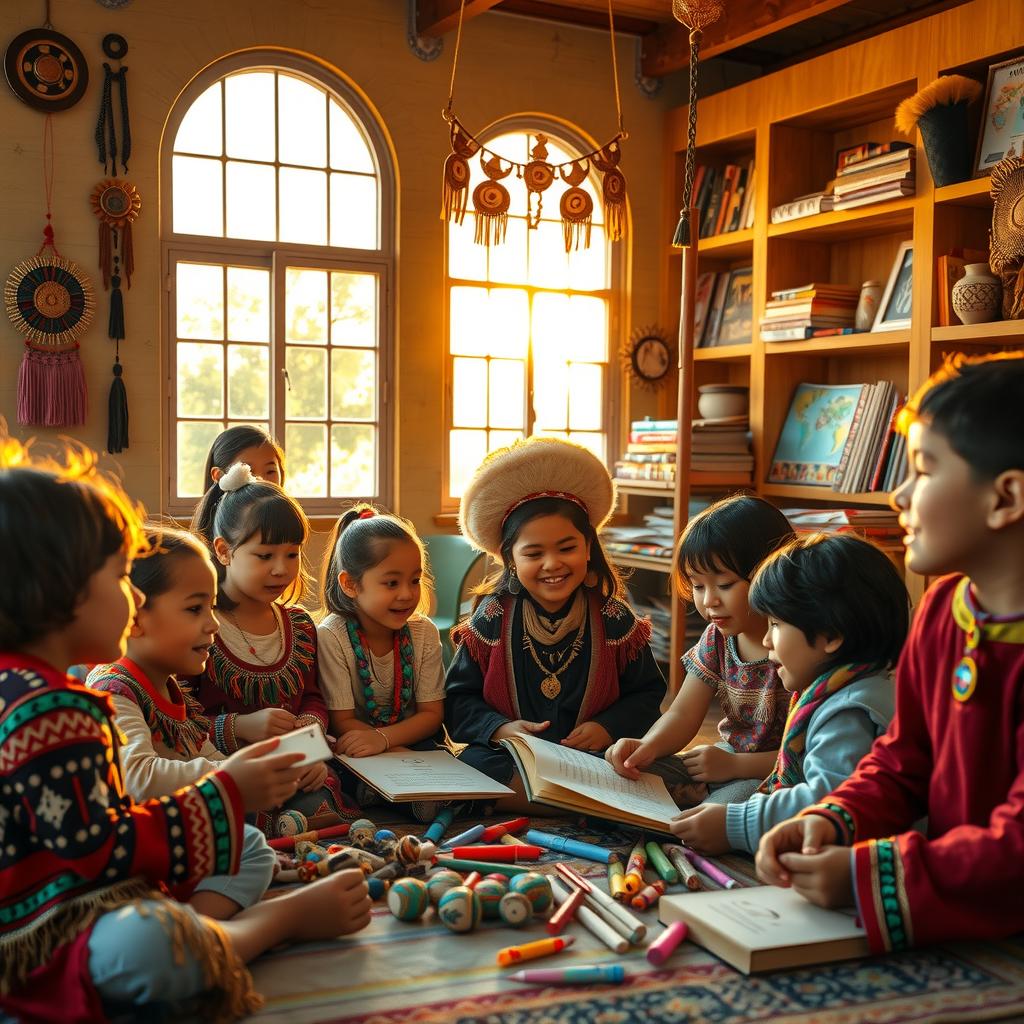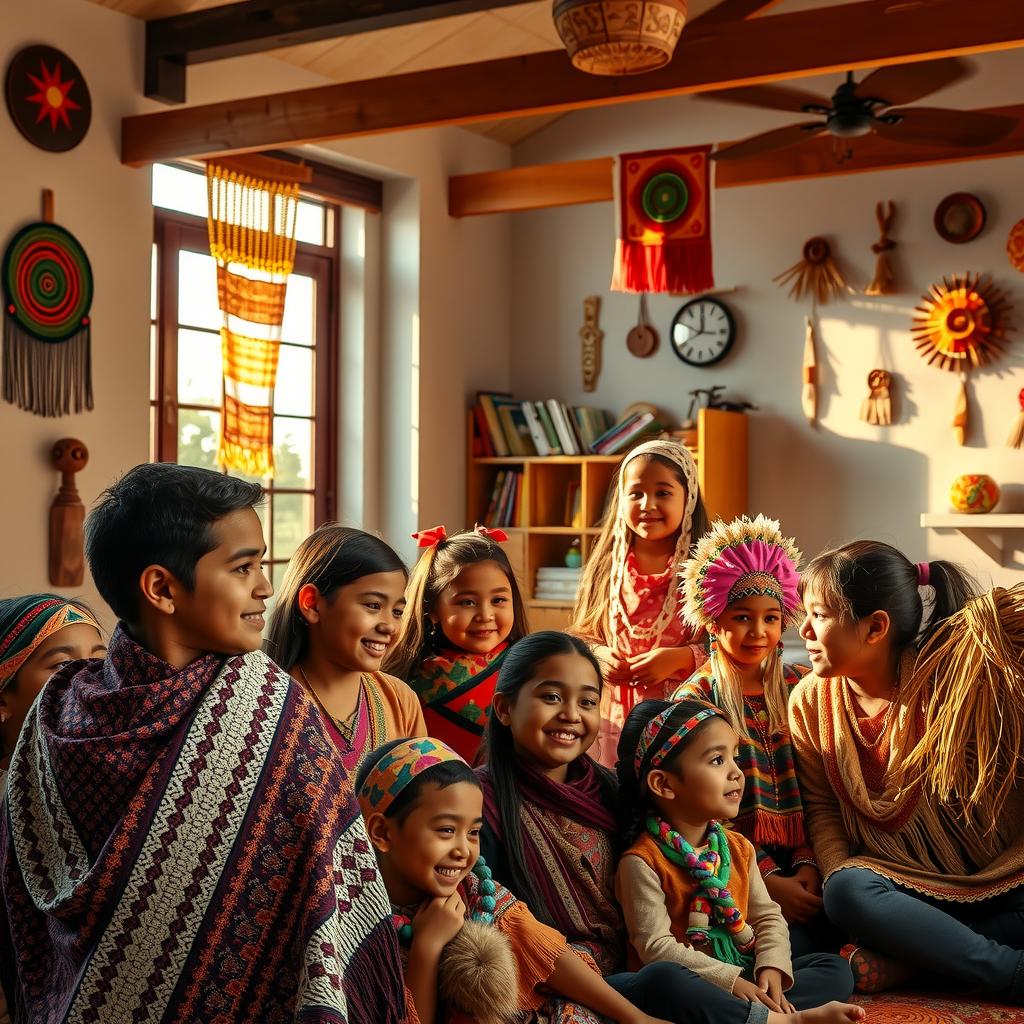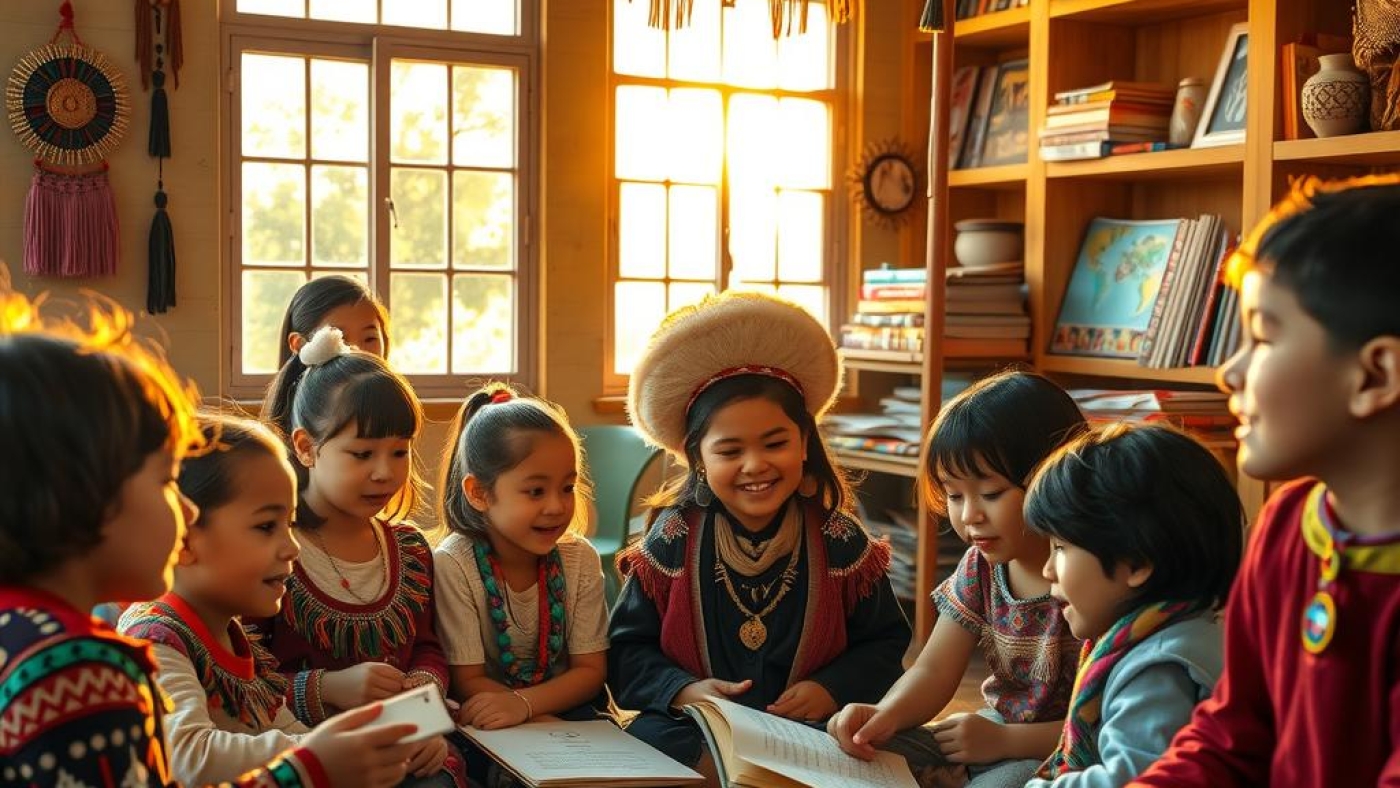In a world increasingly dominated by globalization, the struggle to preserve indigenous languages has never been more pressing. As communities grapple with the encroachment of dominant cultures, many are turning to indigenous language immersion experiences as a powerful solution for revitalizing their native tongues and fostering cultural pride. These immersive educational programs offer participants not only the chance to learn an indigenous language but also provide profound insights into the rich narratives, traditions, and values embedded within these languages. The core value of such experiences lies in their ability to bridge generations while promoting community engagement and ensuring that native languages thrive amidst modern challenges.
Recent studies have shown that bilingual education can significantly enhance cognitive development and cultural identity among learners. Yet, despite these proven benefits, many individuals remain unaware of how engaging in language immersion can transform their relationship with both language learning and cultural experience. By immersing oneself in an environment where an indigenous language is spoken daily—whether through workshops, community gatherings, or dedicated educational programs—participants cultivate not just linguistic skills but also a deeper understanding of the heritage behind those words.
The journey into indigenous language immersion serves as both an opportunity for personal growth and a crucial step toward preserving unique cultural identities at risk of fading away. Through this exploration, readers will discover how engaging directly with native speakers fosters authentic connections while reinforcing communal bonds essential for sustaining these invaluable languages. As they navigate this path toward fluency and appreciation of indigenous cultures, individuals may find themselves participating in something much larger than personal achievement; they become part of a movement dedicated to reclaiming voices lost over time.
As this blog post delves deeper into various aspects surrounding immersion experiences, it aims not only to inform readers about existing opportunities but also inspire them to take action towards supporting indigenous communities globally. The narrative will highlight successful initiatives around the world that showcase how effective these methods can be when aiming for comprehensive understanding through direct involvement—a call-to-action for all who believe in celebrating diversity through language preservation!

Key Insights:
-
Cultural Enrichment Through Language Learning: Engaging in indigenous language immersion experiences allows participants to dive deep into the cultural nuances of native languages. This exposure goes beyond vocabulary and grammar; it encompasses understanding traditions, stories, and worldviews inherent to indigenous cultures. As learners interact with fluent speakers within their communities, they gain a richer appreciation for the heritage that shapes these languages.
-
Community Engagement as a Learning Tool: The structure of educational programs centered around indigenous language immersion experiences emphasizes active participation in local customs and practices. By joining rituals or storytelling sessions, individuals not only practice their language skills but also forge meaningful connections with community members. This direct engagement fosters a sense of belonging and reinforces the importance of preserving cultural identities through shared linguistic practices.
-
Future Generations as Guardians of Heritage: Embracing bilingual education through immersive learning experiences creates pathways for young people to become advocates for their ancestral tongues. When they participate in these enriching programs, they develop an intrinsic motivation to uphold their culture while acquiring valuable skills applicable in today’s globalized society. Such initiatives ensure that indigenous languages continue to thrive across generations, promoting respect for diverse ways of knowing among all who partake in this transformative journey.

The Vital Significance of Indigenous Languages
Understanding Their Role in Cultural Identity
Indigenous languages serve as the backbone of cultural identity, encapsulating unique worldviews, traditions, and histories that are integral to the communities they represent. The urgent need for language preservation has never been more critical; as many indigenous languages face extinction, so too do the rich cultural experiences tied to them. Language is not merely a tool for communication but an embodiment of collective memory and identity. For instance, educational programs focusing on bilingual education provide essential frameworks for teaching native languages while fostering community engagement among younger generations. This approach not only facilitates language learning but also immerses students in their heritage through culturally relevant curricula.
Moreover, engaging with indigenous languages through immersive experiences can significantly enhance one’s understanding of diverse cultures. Such language immersion initiatives allow individuals to experience culture firsthand—participating in traditional practices while conversing in native tongues deepens their connection to these identities. As communities strive towards revitalizing their linguistic heritage, it becomes paramount that support systems rally around these endeavors. By prioritizing educational strategies that integrate both modern pedagogical techniques and traditional knowledge systems, we can cultivate environments where indigenous speakers feel valued and empowered.
The consequences of losing native languages extend beyond mere vocabulary loss; they signify a profound disconnection from ancestors’ wisdom and ways of life. In fact, numerous studies suggest that language influences thought processes—an idea rooted deeply within cognitive linguistics—and this further emphasizes why maintaining linguistic diversity is crucial not just for individual groups but for humanity at large. Encouraging cultural experiences woven into daily interactions promotes respect and appreciation across different societal sectors.
In summary, the imperative for preserving indigenous languages transcends academic interest or theoretical discussions; it speaks directly to safeguarding cultural identities against globalization’s homogenizing forces. Through concerted efforts involving community participation and robust educational frameworks focused on effective bilingual models alongside authentic cultural content delivery methods like storytelling or art forms using indigenous vernaculars—the future holds promise if acted upon diligently today!
Immersive Learning Experiences: Bridging Language and Culture
The Power of Language Immersion in Indigenous Cultures
The realm of language immersion programs offers a profound avenue for authentic engagement with native cultures, enriching both linguistic proficiency and cultural comprehension. Through these immersive experiences, participants are placed directly within communities where the indigenous language thrives, fostering an environment that is both educational and transformative. By learning a native language in its natural context—amidst local customs, traditions, and interactions—students not only acquire vocabulary and grammar but also gain insights into the worldviews embedded within the culture. This dual focus enhances their understanding of how language shapes identity, values, and social dynamics among indigenous peoples.
Incorporating activities such as storytelling sessions led by native speakers or participating in traditional ceremonies allows learners to experience firsthand the richness of cultural narratives that accompany linguistic expressions. These educational programs often prioritize community engagement, wherein students are encouraged to collaborate with local inhabitants on various projects that promote cultural preservation while enhancing their own language learning journey. Such initiatives bridge gaps between generations by facilitating knowledge transfer from elders to youth through shared experiences centered around their heritage.
Moreover, engaging with languages like Navajo or Quechua in real-life settings ignites curiosity about historical contexts related to these indigenous tongues. As participants immerse themselves deeper into daily life—the cuisine they share during communal meals or songs sung at festivals—they begin appreciating nuances absent from conventional classroom instruction. This holistic approach ensures that learners develop not just functional communication skills but also emotional intelligence through empathetic connections fostered via rich intercultural dialogues.
Ultimately, embracing bilingual education rooted in indigenous frameworks cultivates respect for diversity while promoting sustainable practices surrounding cultural exchange. As individuals navigate this intricate tapestry woven by language and tradition—their enhanced appreciation for global multiculturalism reflects back on society’s collective consciousness regarding minority languages at risk of extinction today.
Cultural Engagement Through Language
Enhancing Community Connections via Immersion
Engagement through language immersion experiences plays a pivotal role in creating meaningful connections between individuals from diverse backgrounds while illuminating pathways toward greater understanding of native cultures worldwide. When participants embark upon journeys into realms rich with history tied intricately to specific dialects—a transformation unfolds where mere words become vessels carrying stories laden with significance passed down through generations past.
Through focused efforts aimed at revitalizing endangered languages alongside fostering inter-community relations—these educational platforms empower learners beyond mere acquisition; they instill responsibility towards sustaining living legacies inherent within each tongue spoken aloud during interactional moments shared amongst peers old enough yet willing enough still teach without hesitation! In doing so lies hope: bridging divides previously accentuated across continents via misunderstandings borne out ignorance rather than malice fosters compassion instead!
The fabric connecting every thread forming part whole emerges vibrant alive—woven together tightly sustained resilience derived countless hands working tirelessly ensure tomorrow remains bright promising even amidst challenges faced regularly encountering hurdles unique circumstances experienced locally globally alike throughout this endeavor resulting outcomes far-reaching benefits extending well beyond confines traditional classrooms offered elsewhere universities colleges institutions lacking genuine touch humanity desperately seeks rekindle flame forgotten warmth once shared openly everywhere now concealed behind walls barriers silence long endured finally broken free!
Transformative Learning Pathways
A Journey Towards Linguistic Mastery
As scholars delve deeper into various aspects surrounding effective pedagogy linked closely interwoven relationships established partnerships formed along way emerge clearer picture depicting landscape changing rapidly adapting meet needs modern era simultaneously honoring ancient truths enduring lessons learned throughout ages past present future intertwined seamlessly forever influencing choices shaping lives lived today continue onward evolving gracefully grounded principles trust mutual respect cultivated deeply set roots flourishing beautifully!
Each step taken guided mentorship provided leads ultimately toward mastery embodied skillfully wielding power contained words chosen carefully uttered respectfully embracing essence signifies lifelong commitment nurturing growth development nurtured continuously inspired driven passion unquenchable thirst discovery wonderment lastingly igniting flames propel forward brighter horizons awaiting beckoning all who dare venture forth boldly explore depths hidden treasures await unveiling glimpse magnificent kaleidoscope unfolding before eyes eager hearts yearning embrace everything offered freely generously bestowed kindly gently wrapped love kindness displayed visibly manifesting bonds forged transcending time space reminding everyone essential truth interconnectedness humankind prevails triumphantly celebrating unity diversity strength found differences celebrated cherished joyously rejoiced collectively harmoniously singing praises echoing loudly resonating endlessly echo chambers eternity inviting others join chorus weaving melodies resonate universally binding together souls seeking understanding acceptance belonging regardless background upbringing aspirations held dear warmly welcoming anyone wishing partake journey alongside fellow travelers navigating expansive ocean possibility limitless adventure awaits!
The Importance of Bilingual Education in Cultural Preservation
Sustaining Indigenous Languages through Educational Initiatives
Bilingual education serves as a powerful tool for preserving indigenous languages and fostering respect for diverse cultural perspectives. By integrating indigenous language immersion experiences into educational programs, students are not only taught the mechanics of a second language but also exposed to the rich tapestry of cultural narratives that accompany it. Research indicates that when children learn their native languages alongside a dominant language, they develop stronger cognitive abilities and enhanced academic performance (Cummins, 2000). Furthermore, these language learning experiences instill a sense of identity and belonging within students, allowing them to appreciate their heritage while navigating contemporary society. This duality cultivates an environment where respect for various worldviews is paramount. Community engagement plays a crucial role here; involving local elders or fluent speakers in school activities can bridge generational gaps and ensure that traditional knowledge is passed down effectively.
Enriching Cultural Perspectives through Language Immersion
Fostering Respect by Learning from Diverse Narratives
The long-term benefits of bilingual education extend beyond mere linguistic proficiency; they encompass the cultivation of empathy and understanding among individuals from different backgrounds. Children who participate in bilingual educational programs often find themselves immersed in rich cultural experiences that challenge stereotypes and broaden horizons. For instance, engaging with stories told in an indigenous language allows learners to grasp unique life lessons reflective of specific historical contexts or communal values (McCarty & Nicholas, 2015). These narratives enrich students’ worldviews by providing insights into how different cultures approach concepts such as family ties, spirituality, and environmental stewardship—elements deeply rooted within many indigenous communities. As young learners grow up appreciating these diverse perspectives through formal education settings enriched with indigenous languages, they emerge not just as multilingual individuals but also as culturally competent citizens ready to contribute positively to an increasingly interconnected world.
Building Bridges Through Bilingualism
Creating Inclusive Communities via Educational Engagement
Incorporating bilingual education into mainstream curricula builds bridges between communities while ensuring the sustainability of native languages at risk of extinction. Schools adopting this model become catalysts for change by actively engaging families and local populations in educational processes centered around both dominant societal norms and indigenous cultures. Such community engagement encourages dialogue about shared histories while promoting mutual respect among diverse cultures (Hinton & Hale, 2001). Programs designed with input from local stakeholders can tailor content specifically relevant to those involved; thus enhancing relevance ensures higher participation rates among families eager to see their traditions preserved through younger generations’ learning journeys filled with authentic language immersion experiences. When schools prioritize this integrated approach toward bilingualism—wherein curriculum development includes elements like storytelling sessions conducted in native languages—they empower future generations not merely as passive recipients but active stewards responsible for nurturing their culture’s vitality.
The Role of Educators as Culture Bearers
Empowering Students Through Knowledge Transmission
Educators play an instrumental role in shaping how future generations perceive both their own identities and those around them amidst global diversity challenges faced today due largely due globalization pressures threatening minority voices—including various forms associated with multiple dialects under threat across continents worldwide (Swan & Houghton-Halstead , 2018). Teachers equipped with knowledge about effective methodologies related specifically towards teaching via methods emphasizing cross-cultural competencies coupled alongside regular assessments designed around measuring student progress using criteria aligned closely together will yield transformative outcomes capable paving pathways enabling all participants thrive whether academically socially emotionally during formative years spent within classrooms where innovative pedagogies reign supreme! Therefore investing resources aimed developing short-long term strategies prioritizing approaches highlighting importance incorporating genuine aspects reflecting true essence lived realities embodied symbolism behind each word spoken holds tremendous potential leading towards ultimately forging connections bridging divides uniting humanity across boundaries once thought insurmountable!
FAQ:
Q: What are the primary benefits of participating in indigenous language immersion experiences?
A: Participating in indigenous language immersion experiences offers numerous benefits, including enhanced linguistic skills and a deepened cultural understanding. By engaging directly with fluent speakers within their communities, learners gain valuable insights into the nuances of native languages. This immersive approach not only enriches participants’ vocabulary but also fosters authentic connections to cultural practices such as storytelling and traditional rituals. Ultimately, these educational programs promote respect for diverse perspectives while preserving vital aspects of indigenous heritage.
Q: How do indigenous language immersion experiences contribute to community engagement?
A: Indigenous language immersion experiences foster robust community engagement by encouraging participants to actively partake in local traditions and events. Learners have the opportunity to interact with community members, which facilitates meaningful exchanges that go beyond mere classroom learning. This hands-on involvement helps bridge generational gaps, allowing younger individuals to appreciate their heritage while building relationships based on shared cultural expressions. As a result, these programs serve as catalysts for revitalizing both languages and communities.
Q: In what ways can bilingual education through these programs impact future generations?
A: Bilingual education through indigenous language immersion experiences has a profound impact on future generations by instilling an appreciation for indigenous languages among young people. As they learn about their linguistic roots alongside contemporary skills necessary for today’s multicultural society, students become ambassadors for their heritage. This dynamic form of education not only secures the survival of native tongues but also cultivates respect and understanding across cultures—ultimately creating stewards who advocate for both preservation efforts and inclusive dialogue within broader societal contexts.
